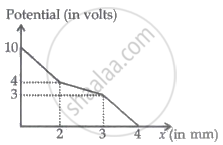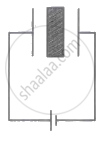Advertisements
Advertisements
प्रश्न
Which of the following waves can be polarized (i) Heat waves (ii) Sound waves? Give reason to support your answer.
उत्तर
Heat waves can be polarized because heat waves are transverse waves whereas sound waves cannot be polarized because sound waves are longitudinal waves.
Transverse waves can oscillate in the direction perpendicular to the direction of its propagation but longitudinal waves like sound waves oscillate only along the direction of its propagation. So, longitudinal waves cannot be polarized.
APPEARS IN
संबंधित प्रश्न
Electric intensity due to a charged sphere at a point outside the sphere decreases with...................
Distinguish with the help of a suitable diagram, the difference in the behaviour of a conductor and a dielectric placed in an external electric field.
Write a relation for polarisation `vecP`of a dielectric material in the presence of an external electric field `vecE .`
Define the terms polarization of a dielectric and write its relation with susceptibility.
A dielectric slab is inserted between the plates of an isolated charged capacitor. Which of the following quantities will remain the same?
The dielectric constant of a medium is also known as ______
Two metal spheres, one of radius R and the other of radius 2R, both have same surface charge density σ. They are brought in contact and separated. What will be new surface charge densities on them?
The voltage rating of a parallel plate capacitor is 500V. Its dielectric can withstand a maximum electric field of 106 V/m. The plate area is 10-4 m2. What is the dielectric constant if the capacitance is 15 pF?
(given ε0 = 8.86 × 10-12 C2/Nm2)
A capacitor filled partially with dielectric material of dielectric constant 'k'. Its electric potential versus position graph is as shown. The distance between the two plates is 4 mm. The dielectric constant of the medium is ______.


